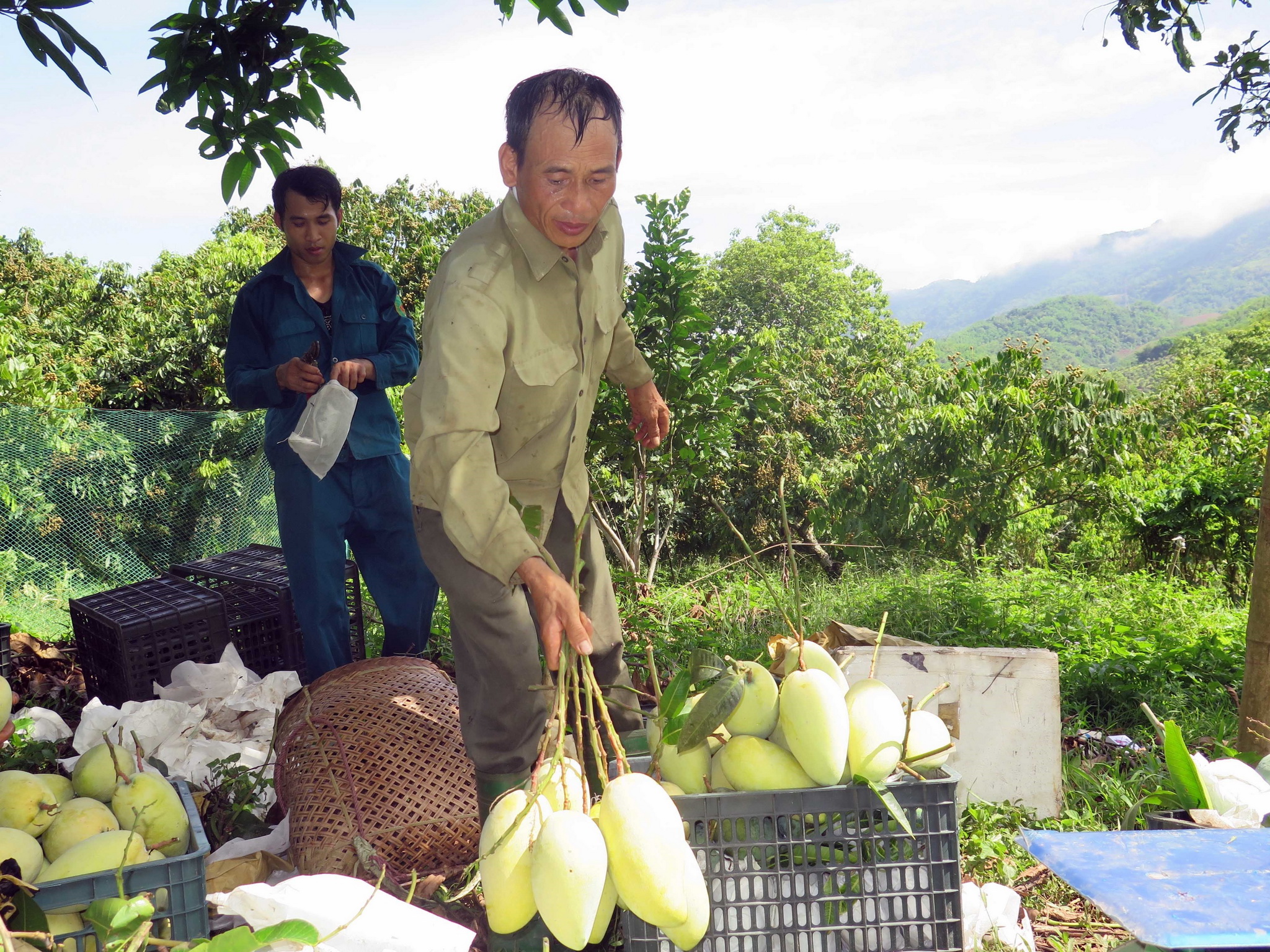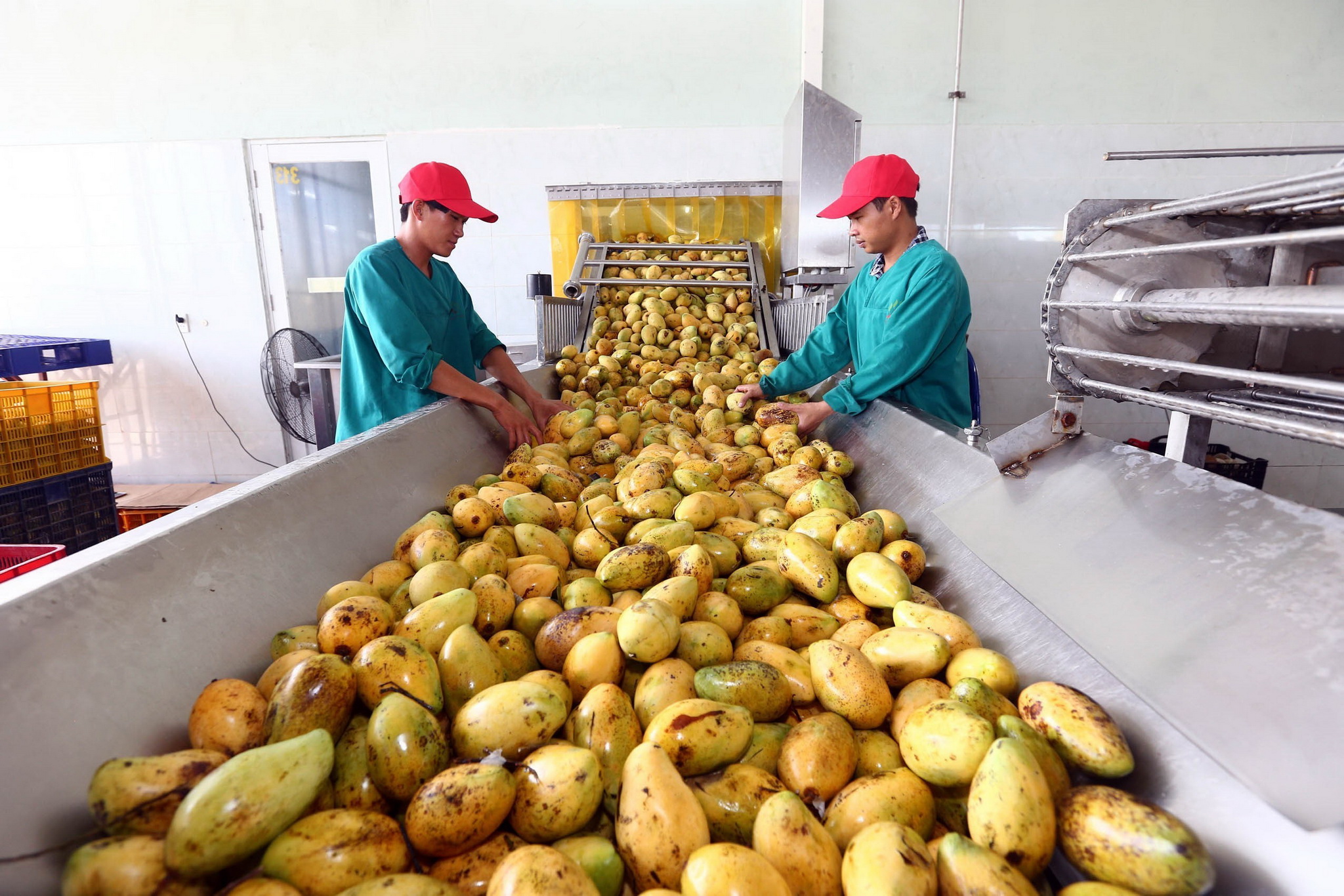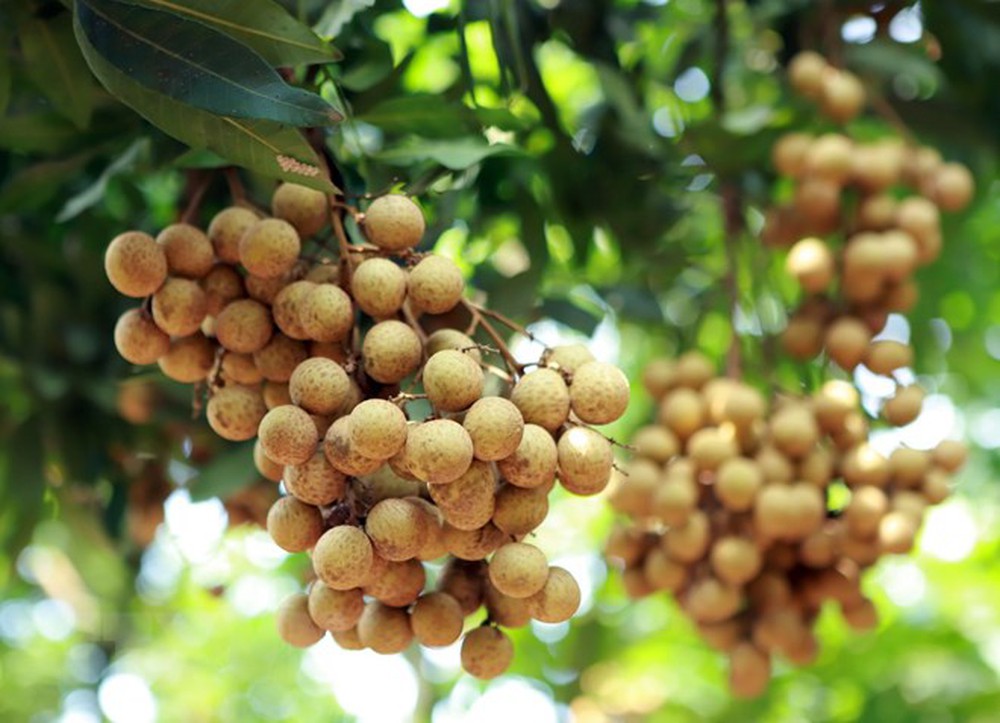Vietnam is targeting 3.6 billion USD in fruit export value for the whole year 2019, therefore, the agricultural sector has worked to set up stable material areas, and improve the quality of Vietnamese fruits so as to expand consumption market.
Vietnamese fruits have been present in 60 countries and territories worldwide, with export growth averaging 15 percent per year. Along with fresh fruits with short storage life, exporters are focusing on high-value added processed products. Deep-processing technologies applied Domestic and foreign consumers said that they have been impressed by the Vietnamese fresh fruits, however processed products have peculiar tastes, and they are suitable for long holidays due to their longer storage life. Chairman of Vinamit Joint Stock Company Nguyen Lam Vien, customers prefer dried fruits for Christmas Day, Lunar New Year, and international and regional sport events, creating motive for the fruit sector to invest heavily in deep-processing technologies. According to statistics from the Ministry of Agriculture and Rural Development’s Department of Crop Production, dragon fruits account for 50 percent of Vietnamese fruit exports’ value. The fruit has hit the shelves at supermarkets in 40 countries and territories worldwide, with China buying 80 percent of the total volume.

Vien said that fruit processing technologies are not a big problem for local firms anymore as his firm has been able to make a wide range of products from dragon fruits such as freeze dried dragon fruit and dried dragon fruit yogurt, most of which have been favoured in foreign markets for a long time. Many other fruits have been processed, including plums, custard-apples, grapes, mangos, bananas, jackfruits, and durians. The company also makes juice from the fresh fruits to take advantage of the fruit glut, helping prevent the trend of bumper crops leading to price drops. Promotion campaign needed to enhance product’s reputation Experts said that although Vietnamese fruits have been present in 60 foreign markets, it is necessary to increase promotion campaigns to nudge the products closer to the consumers. For example, with its impressive advertisements for blueberries, the US was successful to entice consumers worldwide to bore a hole in their pocket. The US scientists and exporters carried out 42 scientific researches on the substantial benefits of this fruit for people’s health.
Vietnamese exporters should learn experience from the US as they are in short of researches highlighting the fruits’ health effects.
Vietnamese exporters should learn experience from the US as they are in short of researches highlighting the fruits’ health effects.

According to the Food and Agriculture Organisation (FAO), demands for fruit and vegetables will increase in the time ahead as the world population is said to rise 2.5 billion people during 2011-2020.
The global need for fruit and vegetables picks up 3.6 percent per year while production growth only stands at 2.6 percent per year; therefore, Vietnamese fruit and vegetables sector holds huge potential to reach out to the world.
Global consumption growth will serve as a boost for Vietnamese staples, and exporters will have more opportunities to branch out their markets if they have good marketing strategies.

Actually, foreign goods can penetrate into the Vietnamese market easily with import tax even falling to zero percent. Meanwhile, Vietnam has no stable technical barriers to protect domestic producers.
Australian fruits like Navel oranges, cherries and tangerines, as well as US cherries, pears, grapes, apples, and blueberries have flooded the Vietnamese markets. Besides, fruit imports from Thailand and China during January – August surged 40-50 percent from the same time in 2018.
In contrast, Vietnamese fruits have to qualify a lot of stringent standards before hitting the shelves of supermarkets in foreign countries. For example, major fruit importers such as Australia, Canada and the US require fruits to be irradiated before they enter the countries; and it would be too costly for northern producers as they have to transport their fruits to the Mekong Delta region for irradiation process.
“With existing technical barriers and a set of standards for imported products, choosy markets are able to protect their domestic production when the FTAs come into force. For instance, in a bid to be sold in Japan, Fhola bananas need to satisfy 145 criteria on plant protection product residues while there are 270 criteria for rice”, Minh said.
Developing high-quality material production zones

Chairman of the Vina T&T Group Nguyen Dinh Muoi said that businesses should invest more in material production zones as well as improve cultivating techniques for growers to create high-quality fruits, in the hope of meeting storage requirements in the choosy markets.
It seems like simple, but is a tough work for growers of fresh fruits, he said.
Not many enterprises stand ready to invest in high-quality material zones, serving domestic consumption and exports. Currently, only Hoang Anh Gia Lai Joint Stock Company and Lavifood Joint Stock Company develop large-scale material areas of 30,000 hectares and 10,000 hectares, respectively.

Fruits developed into a strategic product
Under the Ministry of Agriculture and Rural Development’s shake-up programme, fruit is a key agricultural products along with seafood, rice, cashew, wood and furniture, coffee, cocoa and pepper.
Statistics from the Department of Crop Production showed that the southern region has some 600,000 hectares of orchards as of August 2019, which yield around 6.6 million tonnes, or 67 percent of the country’s total volume. The Mekong Delta region alone has a fruit area of 350,000 hectares and the orchard coverage is expected to increase to 680,000 hectares by 2030.

The Mekong Delta province of Dong Thap has outlined smart solutions to boost the development of the fruit sector, including building brands for Cao Lanh mango, Lai Vung pink tangerine and Indo Chau Thanh longan, and facilitating the formation of co-operatives to shape up local fruit value chain.

Promoting fruit value chain linkages General Secretary of the Vietnam Fruit and Vegetables Association Dang Phuc Nguyen laid stress on the necessity to form a value chain where farmers and businesses are connected to develop high-quality products in accordance with VietGAP and GlobalGAP. The move will help Vietnamese fruits gain competitive edge both in domestic and foreign markets, he added. Currently, the orchard areas in Mekong Delta meeting international standards are small, accounting for only 10 percent of the total fruit plantation region. Additionally, there are 150 fruit processing plants across the nation, with 18 deep-processing facilities; however, the Mekong Delta region’s output is still lagging behind the plant’s capacity.

The agriculture ministry said that only 30 percent of the country’s fruits are processed, the remaining fresh products are consumed domestically and exported. Actually, fresh fruits do not have high value due to their short shelf life. Nguyen Nhu Hien, an official from the Department of Crop Production’s southern office, said that the fruit sector needs to re-organise production while local firms should pay due attention to renew processing technologies so as to promote the efficiency of fruit production, processing and consumption. Besides, fruit brands and market development are deemed as the two important factors behind the success of the fruit sector. The trade promotion agencies must closely work with trade offices in foreign countries to study market taste in the host nations. This will help Vietnamese farmers and businesses have proper production plans.

